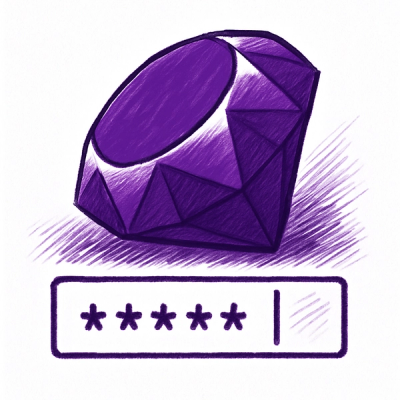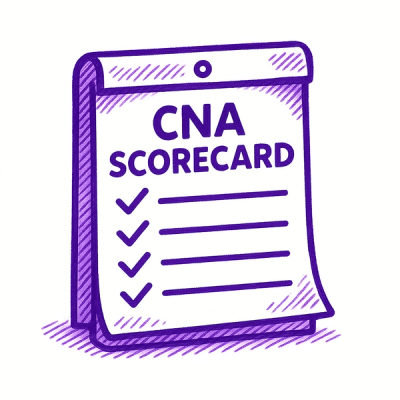
Security News
npm Adopts OIDC for Trusted Publishing in CI/CD Workflows
npm now supports Trusted Publishing with OIDC, enabling secure package publishing directly from CI/CD workflows without relying on long-lived tokens.
django-attachments is generic Django application to attach Files (Attachments) to any model.
.. image:: https://badge.fury.io/py/django-attachments.svg :target: https://badge.fury.io/py/django-attachments
.. image:: https://travis-ci.org/bartTC/django-attachments.svg?branch=master :target: https://travis-ci.org/bartTC/django-attachments
.. image:: https://api.codacy.com/project/badge/Grade/e13db6df2a2148b08c662798642aa611 :alt: Codacy Badge :target: https://app.codacy.com/app/bartTC/django-attachments
.. image:: https://api.codacy.com/project/badge/Coverage/e13db6df2a2148b08c662798642aa611 :target: https://www.codacy.com/app/bartTC/django-attachments
django-attachments is a generic set of template tags to attach any kind of files to models.
Put attachments to your INSTALLED_APPS in your settings.py
within your django project:
.. code-block:: python
INSTALLED_APPS = (
...
'attachments',
)
Add the attachments urlpattern to your urls.py:
.. code-block:: python
url(r'^attachments/', include('attachments.urls', namespace='attachments')),
Migrate your database:
.. code-block:: shell
./manage.py migrate
Grant the user some permissions:
For adding attachments grant the user (or group) the permission
attachments.add_attachment.
For deleting attachments grant the user (or group) the permission
attachments.delete_attachment. This allows the user to delete their
attachments only.
For deleting foreign attachments (attachments by other users) grant
the user the permission attachments.delete_foreign_attachments.
Set DELETE_ATTACHMENTS_FROM_DISK to True if you want to remove
files from disk when Attachment objects are removed!
Configure FILE_UPLOAD_MAX_SIZE (optional). This is the maximum size in
bytes before raising form validation errors. If not set there is no restriction
on file size.
django-attachments stores the files in your site_media directory and does not modify them. For example, if an user uploads a .html file your webserver will probably display it in HTML. It's a good idea to serve such files as plain text. In a Apache2 configuration this would look like:
.. code-block:: apache
<Location /site_media/attachments>
AddType text/plain .html .htm .shtml .php .php5 .php4 .pl .cgi
</Location>
django-attachments provides the delete_stale_attachments management command.
It will remove all attachments for which the related objects don't exist anymore!
Sys-admins could then:
.. code-block:: shell
./manage.py delete_stale_attachments
You may also want to execute this via cron.
Installing a local devel environment with pipenv.
It creates a virtualenv for you with the right ENV variables loaded from .env.
.. code-block:: shell
# pip install pipenv
$ pipenv install
Loading .env environment variables...
Installing dependencies from Pipfile.lock (a053bc)...
To activate this project's virtualenv, run pipenv shell.
Alternatively, run a command inside the virtualenv with pipenv run.
Run the testsuite in your local environment using pipenv:
.. code-block:: shell
$ cd django-attachments/
$ pipenv install --dev
$ pipenv run pytest attachments/
Or use tox to test against various Django and Python versions:
.. code-block:: shell
$ tox -r
You can also invoke the test suite or other 'manage.py' commands by calling
the django-admin tool with the test app settings:
.. code-block:: shell
$ cd django-attachments/
$ pipenv install --dev
$ pipenv run test
$ pipenv run django-admin.py runserver
$ pipenv run django-admin makemigrations --dry-run
.. code-block:: shell
$ git tag
$ change version in setup.cfg
$ pip install -U setuptools
$ python setup.py sdist && python setup.py bdist_wheel --universal
$ twine upload --sign dist/*
django-attachments provides a inline object to add a list of attachments to any kind of model in your admin app.
Simply add AttachmentInlines to the admin options of your model. Example:
.. code-block:: python
from django.contrib import admin
from attachments.admin import AttachmentInlines
class MyEntryOptions(admin.ModelAdmin):
inlines = (AttachmentInlines,)
.. image:: http://cloud.github.com/downloads/bartTC/django-attachments/attachments_screenshot_admin.png
First of all, load the attachments_tags in every template you want to use it:
.. code-block:: html+django
{% load attachments_tags %}
django-attachments comes with some templatetags to add or delete attachments for your model objects in your frontend.
get_attachments_for [object]: Fetches the attachments for the given
model instance. You can optionally define a variable name in which the attachment
list is stored in the template context (this is required in Django 1.8). If
you do not define a variable name, the result is printed instead.
.. code-block:: html+django
{% get_attachments_for entry as attachments_list %}
attachments_count [object]: Counts the attachments for the given
model instance and returns an int:
.. code-block:: html+django
{% attachments_count entry %}
attachment_form: Renders a upload form to add attachments for the given
model instance. Example:
.. code-block:: html+django
{% attachment_form [object] %}
It returns an empty string if the current user is not logged in.
attachment_delete_link: Renders a link to the delete view for the given
attachment. Example:
.. code-block:: html+django
{% for att in attachments_list %}
{{ att }} {% attachment_delete_link att %}
{% endfor %}
This tag automatically checks for permission. It returns only a html link if the
give n attachment's creator is the current logged in user or the user has the
delete_foreign_attachments permission.
.. code-block:: html+django
{% load attachments_tags %}
{% get_attachments_for entry as my_entry_attachments %}
<span>Object has {% attachments_count entry %} attachments</span>
{% if my_entry_attachments %}
<ul>
{% for attachment in my_entry_attachments %}
<li>
<a href="{{ attachment.attachment_file.url }}">{{ attachment.filename }}</a>
{% attachment_delete_link attachment %}
</li>
{% endfor %}
</ul>
{% endif %}
{% attachment_form entry %}
{% if messages %}
<ul class="messages">
{% for message in messages %}
<li{% if message.tags %} class="{{ message.tags }}"{% endif %}>
{{ message }}
</li>
{% endfor %}
</ul>
{% endif %}
DELETE_ATTACHMENTS_FROM_DISK will delete attachment files when the
attachment model is deleted. Default False!FILE_UPLOAD_MAX_SIZE in bytes. Deny file uploads exceeding this value.
Undefined by default.AppConfig.attachment_validators - a list of custom form validator functions
which will be executed against uploaded files. If any of them raises
ValidationError the upload will be denied. Empty by default. See
attachments/tests/testapp/apps.py for an example.remove_file_from_disk() use Django's default_storage which
should make this function work not only with FileSystemStorage but also
with cloud providers like AWS S3 for exampleadd_attachment() view
when the X-Return-Form-Errors request header is present.
Response code is 400 - BAD REQUEST because this is a client
error.AppConfig.attachment_validatorsIssue #94 <https://github.com/bartTC/django-attachments/issues/94>_
(Aaron C. de Bruyn)Issue #78 <https://github.com/bartTC/django-attachments/issues/78>_object_id from TextField() to CharField(max_length=64),
and keep the db_index argument. This resolves the issues on MariaDB/MySQL.object_id, created and modified fields.delete_stale_attachments command to remove attachments for which
the corresponding object has been deleted.Attachment.attach_to() method for moving attachments between
different objects.next parameter.attachments_count.DELETE_ATTACHMENTS_FROM_DISK to delete attachment files
if the attachment model is deleted.FILE_UPLOAD_MAX_SIZE to deny file uploads exceeding this
value.General code cleanup to keep compatibility with the latest Django (currently 1.8 upwards) as well as Python3. Introduced full testsuite.
Backwards incompatible: The attachment views now use a urlpattern
namespace so you need to adjust the urlpattern::
url(r'^attachments/', include('attachments.urls', namespace='attachments')),
Backwards incompatible: The quotes around the as variable name
must be removed::
{% get_attachments_for entry as "my_entry_attachments" %}
becomes
{% get_attachments_for entry as my_entry_attachments %}
Possibly backwards incompatible: The old version had bugs around
permissions and were not enforcing it in all places. From now on the
related permissions add_attachment and delete_attachment must
been applied to all related users.
This version adds more granular control about user permissons. You need to explicitly add permissions to users who should been able to upload, delete or delete foreign attachments.
This might be backwards incompatible as you did not need to assign add/delete permissions before!
FAQs
django-attachments is generic Django application to attach Files (Attachments) to any model.
We found that django-attachments demonstrated a healthy version release cadence and project activity because the last version was released less than a year ago. It has 2 open source maintainers collaborating on the project.
Did you know?

Socket for GitHub automatically highlights issues in each pull request and monitors the health of all your open source dependencies. Discover the contents of your packages and block harmful activity before you install or update your dependencies.

Security News
npm now supports Trusted Publishing with OIDC, enabling secure package publishing directly from CI/CD workflows without relying on long-lived tokens.

Research
/Security News
A RubyGems malware campaign used 60 malicious packages posing as automation tools to steal credentials from social media and marketing tool users.

Security News
The CNA Scorecard ranks CVE issuers by data completeness, revealing major gaps in patch info and software identifiers across thousands of vulnerabilities.